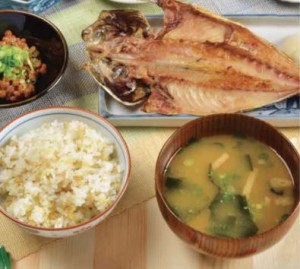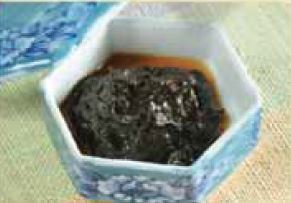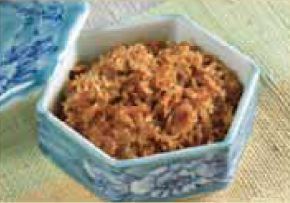The best way to start your day is to have a good breakfast. A healthy, delicious diet will help you maintain stamina and enthusiasm.
Contents:
- Why is Breasfast Necessary?
- Breakfast and Dieting
- Let’s Eat a Healthy Breakfast
- Rice Recommendations
- Recipes of Pre-cooked Dishes for Japanese-Style Breakfast
Why is Breakfast Necessary?
 Because adults and children are so busy in today’s world, many leave home in the morning without breakfast. However, breakfast isn’t just to satisfy hunger. It has a much more important role.
Because adults and children are so busy in today’s world, many leave home in the morning without breakfast. However, breakfast isn’t just to satisfy hunger. It has a much more important role.
A person’s temperature fluctuates throughout the day, declining after about 9 p.m. to enter a resting state for the brain and body. This means that your body temperature is at its lowest point as you wake up in the morning. This may be one of the reasons why people feel so groggy in the mornings. Your body temperature must be raised to start the day’s activities. It is said that a warm breakfast is the most effective way to do that.
Breakfast and Dieting
Some of the most common reasons for skipping breakfast are as follows: “I don’t have time for it,” “I’m not hungry,” or “I’d rather sleep in.” Some people even skip breakfast for the sake of a “diet.” However, the notion that eating less in the morning will lead to weight loss is a misconception. It actually causes decreased activity in the mind and body.
The energy gained from a hearty breakfast fuels the day’s activities, and your weight will gradually decrease. With no breakfast, your body senses a deficiency of nutrients and tries to store fat. That’s why an evening meal with the same amount of calories as your breakfast results in weight gain, which is the opposite of what dieters hope to achieve. It’s important to consume starchy foods such as rice for breakfast and avoid taking in too much fat.
Let’s Eat a Healthy Breakfast
Gochiso magazine recommends a breakfast that includes rice. Rice is the basis for a healthy Japanese diet that includes fish, soy, vegetables, and seaweed. The steady chewing of rice at the time of consumption improves blood flow to the brain. It’s digested slowly and then absorbed. It gradually increases the blood sugar count, which is then sustained for a prolonged period of time. It provides an extremely stable source of glucose for the brain, and it’s linked to improvements in effective learning. A habit of regularly eating rice for breakfast stimulates the intestines, and eating breakfast in a relaxed state aids intestinal function to help prevent or alleviate bloating or constipation.
Rice Recommendations
Those who don’t have the habit of eating rice might find it hard to decide where to start. Rice can be flavored virtually in any way, so you’ll never get tired of it. Eating rice for breakfast is a great habit to pick up. If you’re busy in the morning or want to keep things simple, try starting with onigiri (rice balls) or okayu (rice gruel). Tofu (bean curd), natto (fermented soybeans), dried marine products and eggs are perfect companions for rice and can be stored for a long time. Using such ready-to-eat foods in clever ways is always an option. Leftovers from the night before or pre-cooked dishes are extremely useful as well.
Meals that revolve around starchy rice supply the brain with its energy source, which is glucose. We recommend eating a good breakfast for heightened concentration so that you can breeze through your workday.
Recipes of Pre-cooked Dishes for Japanese-Style Breakfast
Seaweed Boiled Down in Soy Sauce Recipe
Here’s a great way to reuse leftover seaweed. This dish can be kept frozen, too.

Ingredients (Serves 6)
- 4 or 5 sheets yakinori (roasted seaweed) (large sheet)
- 2 Tbsp. soy sauce
- 2 Tbsp. mirin (sweet Japanese cooking wine)
Cooking Directions
- Tear the seaweed into large pieces and soak in 7oz. of water.
- Heat on low, and add the soy sauce and the mirin once some of the water evaporates. Boil down until all the liquid has evaporated.
- Serve over rice.
Ume Katsuo (plum with dried bonito flakes) Recipe
Can be wrapped and stored in the fridge for up to two weeks.

Ingredients (Serves 4)
- 4 pickled plums (large)
- 2 cups katsuobushi (dried bonito flakes)
- 1 tsp. soy sauce
Cooking Directions
- Remove the pit from the plum, and chop the pulp into small pieces.
- Place in a bowl and mix in the katsuobushi. Add soy sauce and mix well.
- Serve over rice.

